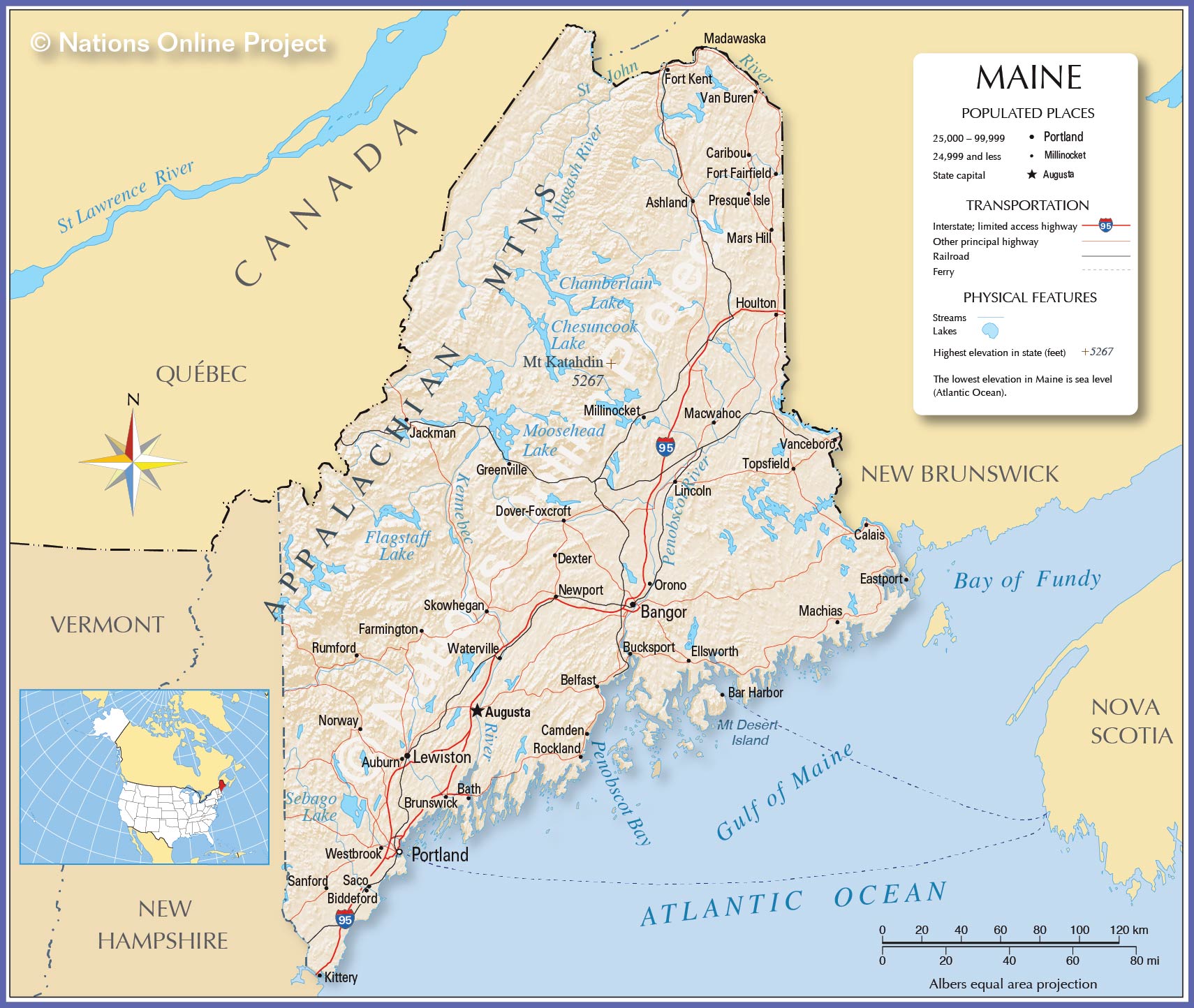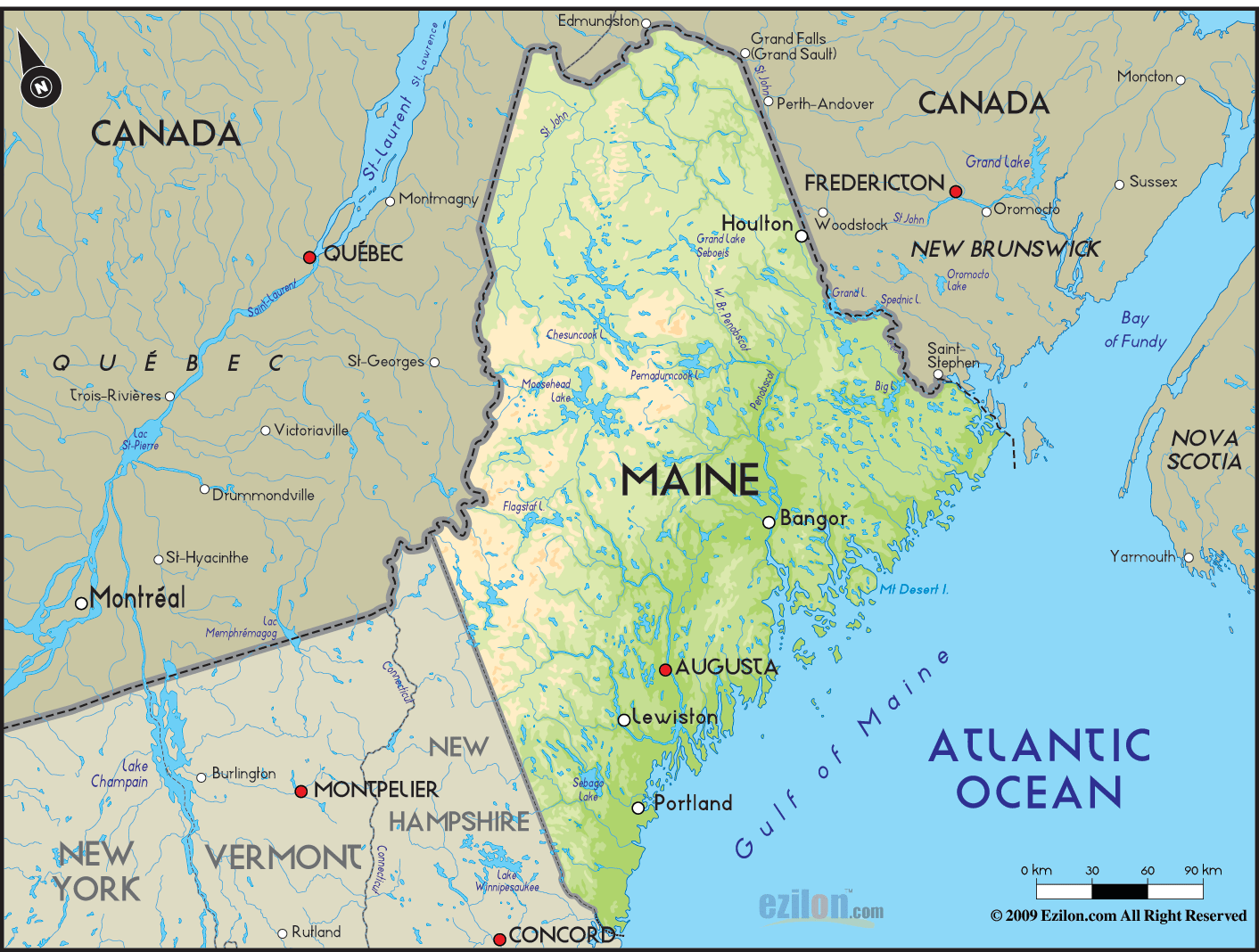
Maine: Where the Wild Coast Meets an Enduring Spirit
The very name "Maine" conjures images of rugged coastlines, ancient lighthouses piercing through the fog, and the unmistakable scent of salt and pine. It’s a place etched into the American consciousness as the quintessential New England escape, a state that proudly declares itself "Vacationland" on its license plates and promises "The Way Life Should Be." But beyond the idyllic postcards, Maine is a land of profound contrasts, where a fiercely independent spirit thrives amidst breathtaking natural beauty, a vibrant culinary scene, and an economy deeply rooted in the ocean.
Stretching from the craggy shores of its southern beaches to the wild, forested reaches of its northern interior, Maine boasts a coastline that, if straightened, would extend for over 3,400 miles – longer than California’s. This labyrinthine edge, sculpted by glaciers and relentlessly battered by the Atlantic, is the heart and soul of the state. It’s a mosaic of sandy coves, dramatic cliffs, and more than 4,600 islands, each telling a story of maritime heritage and resilient communities.

The Lifeblood of the Coast: Lobster and Lighthouses
Nowhere is Maine’s identity more palpable than in its iconic lobster industry. Early morning mists often conceal the silhouettes of sturdy lobster boats, their traps laden with bait, heading out to sea. This isn’t merely an economic activity; it’s a way of life, passed down through generations. Maine produces over 80% of the nation’s supply of American lobster, making it the largest single-species fishery in the United States.
"Lobstering isn’t just a job; it’s who we are," says Captain Sarah Miller, a third-generation lobsterman from Stonington, a town known for its granite quarries and fishing fleet. "You learn it from your parents, your grandparents. You learn the tides, the weather, the bottom of the ocean. It’s in your blood, and you respect it, because it gives back what you put in."
This deep respect is evident in Maine’s remarkably sustainable fishing practices. Strict regulations, such as minimum and maximum size limits, and the V-notching of egg-bearing females (which are then released), ensure the health of the lobster population for future generations. It’s a testament to a community understanding that their livelihood depends on the stewardship of their natural resources.
Dotting this intricate coastline are over 60 lighthouses, silent sentinels against the formidable power of the sea. From the historic beauty of Portland Head Light, commissioned by George Washington in 1791, to the remote beacon of Bass Harbor Head Light, these structures are not just navigational aids but symbols of hope, perseverance, and Maine’s enduring connection to the ocean. They stand as enduring testaments to the lives of the lightkeepers and the sailors who relied on their guiding beams.
Acadia: Where Mountains Meet the Sea
While the entire coast is a spectacle, a significant portion of its magic is concentrated within Acadia National Park. The first national park east of the Mississippi, Acadia is a marvel of conservation, much of it donated by philanthropists like John D. Rockefeller Jr. It’s a unique ecosystem where granite mountains plunge directly into the sea, offering a stunning juxtaposition of rugged peaks and crashing waves.
Visitors flock to Acadia for its diverse offerings: hiking the challenging trails of Cadillac Mountain (the highest point on the U.S. East Coast, offering one of the first sunrises in the nation during certain times of the year), biking the historic carriage roads, kayaking among the coastal islands, or simply gazing at the raw power of the ocean from Otter Cliff. The park’s blend of forest, lake, and ocean environments makes it a microcosm of Maine’s natural grandeur.

"Acadia is more than just a park; it’s an experience that awakens all your senses," remarks environmentalist and author, Eleanor Vance. "You can feel the ancient granite beneath your feet, smell the balsam fir and the salty air, hear the gulls and the ocean’s roar. It reminds you of the immense power and delicate balance of nature."
Beyond the Coast: The Wild Interior
While the coast often steals the spotlight, a vast, equally compelling "other Maine" lies inland. This is a land of sprawling forests, pristine lakes, and the northern reaches of the Appalachian Trail. The Great North Woods, largely privately owned and managed for timber, represent one of the largest undeveloped tracts of land in the eastern United States. Here, moose outnumber people, and the silence is broken only by the rustle of leaves or the call of a loon.
Moosehead Lake, Maine’s largest lake, is a gateway to this wilderness, offering opportunities for fishing, whitewater rafting, and exploring remote logging roads. This region embodies the state’s rugged, self-reliant spirit, a place where traditions of hunting, fishing, and forestry still define communities. It’s a stark contrast to the bustling coastal towns, offering solitude and an authentic connection to the wild.
Portland: Urban Sophistication with Maritime Charm
Amidst the wilderness and the small fishing villages, Maine also boasts a vibrant urban center: Portland. Once a gritty working port, Portland has undergone a remarkable renaissance, transforming into a cultural and culinary hotspot without losing its authentic maritime charm. Its cobblestone streets in the Old Port district buzz with activity, housing award-winning restaurants, independent boutiques, and a burgeoning craft beer scene.
Portland’s culinary reputation has soared in recent years, drawing foodies from around the globe. From upscale farm-to-table establishments to casual seafood shacks, the city offers a diverse gastronomic experience, always with a nod to local ingredients. "Portland has found a way to blend its history with a very modern, forward-thinking approach to food and art," says acclaimed chef, Maria Sanchez, who recently opened a restaurant in the city. "It’s a city that respects its roots but isn’t afraid to innovate."
The city also boasts a thriving arts scene, with galleries, theaters, and a lively music community. The Portland Museum of Art, numerous independent galleries, and the historic Merrill Auditorium contribute to a rich cultural tapestry that belies the city’s relatively small size.
The Four Seasons: A Transformative Landscape
Maine’s landscape undergoes a dramatic transformation with each passing season, each offering its own unique appeal. Summer is "Vacationland" in full swing: warm days perfect for beach-going, sailing, and hiking, with long evenings for lobster bakes and stargazing. The population swells as tourists flock to coastal towns and inland retreats.
Autumn paints the state in a breathtaking palette of fiery reds, oranges, and golds, as the vast forests ignite with fall foliage. This spectacle draws visitors from around the world, eager to witness nature’s vibrant farewell before winter. "There’s nothing quite like a crisp Maine autumn day," says local photographer, David Green. "The air is sharp, the colors are unreal, and you can feel the quiet anticipation of winter."
Winter arrives with a blanket of snow, transforming the landscape into a pristine wonderland. While many businesses slow down, winter sports enthusiasts embrace skiing, snowboarding, snowshoeing, and ice fishing. The quiet beauty of a snow-covered Maine offers a serene escape. Spring, though often muddy, brings the promise of new life, the tapping of maple trees for syrup, and the slow awakening of the forests and coastal waters.
The Enduring Maine Spirit
Underlying all of Maine’s physical beauty and economic activity is an enduring spirit – one of resilience, independence, and a deep connection to the land and sea. Mainers are often characterized by their understated demeanor, their strong work ethic, and their genuine friendliness, often revealed after a polite, initial reserve. There’s a practical sensibility, a "can-do" attitude born from living in a place where nature can be both bountiful and unforgiving.
This spirit is perhaps best encapsulated by the state’s official motto, "Dirigo," Latin for "I Lead." It reflects not only Maine’s historical role as the first state to greet the sunrise but also the pioneering spirit of its people. They lead by example, in their sustainable practices, their innovative industries, and their unwavering commitment to preserving the unique character of their beloved state.
As Maine navigates the challenges of a changing climate, economic shifts, and the pressures of tourism, its people remain steadfast. They understand that the beauty of their coast, the bounty of their waters, and the tranquility of their forests are not just assets but an integral part of their identity. Maine is more than a destination; it is a way of life, a testament to the enduring power of nature, and the resilient spirit of those who call it home. It is, indeed, "The Way Life Should Be."


